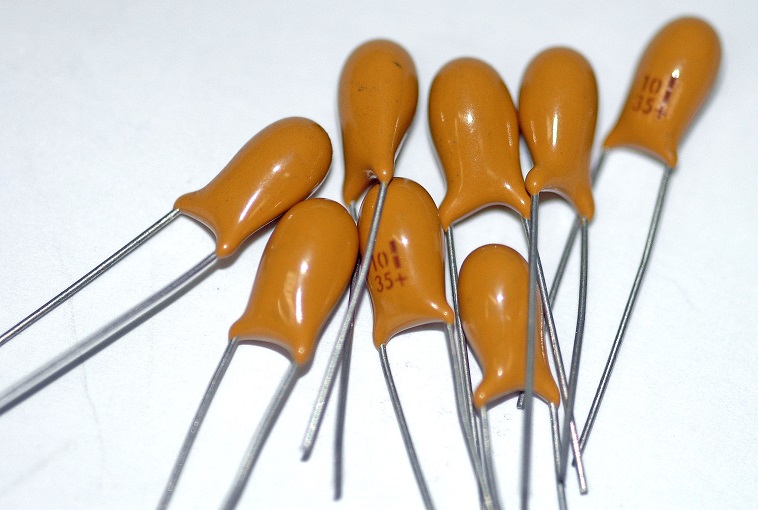
As a class of electrolytic capacitors, the tantalum capacitor is widely used in communications, aerospace and military industries, submarine cables, advanced electronic devices, civil appliances, televisions, and many other aspects.

Tantalum Capacitors
Tantalum capacitors are made of metal tantalum (Ta) as the anode material. According to their different anode structures, tantalum capacitors can be divided into foil tantalum capacitors and tantalum powder-sintered tantalum capacitors.
And the tantalum powder sintered tantalum capacitors can be divided into tantalum capacitors with solid electrolytes and tantalum capacitors with non-solid electrolytes according to their different working electrolyte. Among them, the market demand for solid tantalum electrolytic capacitors is large, such as CA type and CA42 type.

Tantalum Capacitor
The tantalum electrolytic capacitors have the CA mark on the casing, but the symbols in the circuit are the same as those of other electrolytic capacitors. The most common tantalum capacitor structure is shown in the picture above.
Compared with aluminum electrolytic capacitors, tantalum electrolytic capacitors have the following advantages:
Because tantalum capacitors use tantalum powder with very fine particles, and the dielectric constant of the tantalum oxide film is 17 higher than that of the aluminum oxide film, the tantalum capacitor has a large capacitance per unit volume.
Generally, tantalum electrolytic capacitors can work normally at a temperature of -50°C to 100°C. Although aluminum electrolytic capacitors can also work in this range, the electrical performance is far inferior to tantalum electrolytic capacitors.
The tantalum oxide film medium in the tantalum electrolytic capacitor is not only resistant to corrosion but also can maintain good performance for a long time.
For capacitors with poor frequency characteristics, the capacitance decreases significantly when the operating frequency is high, and the loss also increases sharply. But solid tantalum electrolytic capacitors can work above 50kHz. With the increase in frequency, tantalum capacitors will also show a decrease in capacity, but the decrease is relatively small.
Data show that when working at 10kHz, the capacity of tantalum capacitors drops by less than 20%, while the capacity of aluminum electrolytic capacitors drops by as much as 40%.
Tantalum oxide film has stable chemical properties, and because Ta2O5, the tantalum anode substrate, can withstand strong acids and bases. Therefore, it can use solid electrolytes or liquid electrolytes with low acid resistivity, which makes the loss of tantalum electrolytic capacitors less than that of aluminum electrolytic capacitors, and the temperature stability is good.
Thank you for reading our article and we hope you’ve enjoyed it. If you want to know more about tantalum, we would like to advise you to visit Advanced Refractory Metals (ARM) for more information.
Headquartered in Lake Forest, California, USA, ARM is a leading manufacturer & supplier of refractory metals across the world. It provides customers with high-quality refractory metals such as tungsten, molybdenum, tantalum, rhenium, titanium, and zirconium at a very competitive price.
Copyright © 1994-2024 Advanced Refractory Metals owned by Oceania International LLC, All Rights Reserved.